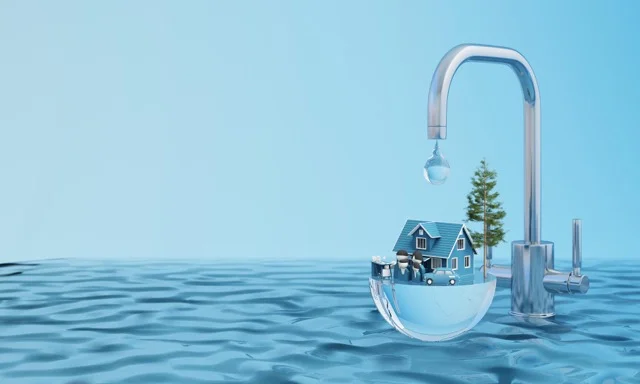The smart Trick of Reclaim Waste That Nobody is Talking About
The smart Trick of Reclaim Waste That Nobody is Talking About
Blog Article
How Reclaim Waste can Save You Time, Stress, and Money.
Table of ContentsHow Reclaim Waste can Save You Time, Stress, and Money.Fascination About Reclaim WasteThings about Reclaim WasteThe Single Strategy To Use For Reclaim WasteReclaim Waste - An Overview
Check out the types, incidents, and kinds of liquid waste. Domestic sewer waste describes the waste and items from a household sewage-disposal tank. This kind of waste is developed by people in residences, colleges, and various other buildings. This only includes septic systems that have a drain field. The proper administration and disposal of residential sewage waste need liquid waste to be transferred to a sewage treatment plant where the appropriate approaches and devices are used to detoxify and get rid of waste.
Commercial waste often consists of prospective threats, such as flammable materials or a blend of liquid and strong waste items, and requires an extra advanced and in-depth disposal process. The disposal of commercial waste typically involves the filtering of waste prior to transportation to guarantee secure and appropriate disposal. Industrial waste is created from results and overflow of commercial processes and manufacturing.
This kind of waste can not use the very same sewer monitoring transport or processes as septic or commercial fluids. The hazardous waste administration process requires the examination and screening of liquid waste before it undertakes the disposal procedure (liquid waste removal). Runoff waste is the liquid waste that originates from runoff and excess stormwater in very booming areas or cities
Overflow waste can trigger contamination and flooding if not dealt with properly. Ensuring appropriate waste management can stop catastrophes and reduce environmental damage.
Some Known Details About Reclaim Waste
Call PROS Solutions today to learn more about our waste monitoring and disposal services and the correct methods to take care of the fluid waste you generate.
(https://www.tumblr.com/reclaimwaste1/766851148823068673/at-reclaim-waste-were-a-national-solutions?source=share)This so-called 'wastewater' is not just a vital resource but, after treatment, will be launched to our land, rivers or the ocean. Made use of water from commodes, showers, bathrooms, kitchen sinks, laundries and industrial processes is recognized as wastewater.

water utilized to cool down equipment or tidy plant and equipment). Stormwater, a type of wastewater, is runoff that streams from agricultural and metropolitan locations such as roofings, parks, gardens, roadways, courses and gutters right into stormwater drains, after rain. Stormwater streams unattended straight to local creeks or rivers, at some point getting to the ocean.
Getting My Reclaim Waste To Work
In Queensland, most wastewater is dealt with at sewage treatment plants. Wastewater is delivered from domestic or commercial sites through a system of drains and pump terminals, known as sewage reticulation, to a sewer treatment plant.
The Division of Natural Resources recommends local federal governments regarding handling, operating and keeping sewerage systems and therapy plants. In unsewered locations, neighborhood federal governments visit our website might need homeowners to install private or household sewer therapy systems to deal with domestic wastewater from toilets, kitchen areas, shower rooms and laundries. The Division of Natural Resources authorises using family systems when they are confirmed to be efficient.
In some new subdivisions, treatment of some stormwater to get rid of litter, sand and crushed rock has actually started utilizing gross pollutant traps. Wastewater treatment happens in 4 phases: Eliminates strong issue.
Wastewater then flows into large storage tanks where solids resolve and are eliminated as sludge. Oil and scum are skimmed from the surface area. Makes use of tiny living organisms called micro-organisms to break down and get rid of continuing to be dissolved wastes and great fragments. Micro-organisms and wastes are incorporated in the sludge. Eliminates nitrogen and phosphorus nutrients that could trigger algal blossoms in our waterways and threaten water life.
An Unbiased View of Reclaim Waste
Nutrient removal is not readily available at all sewer therapy plants due to the fact that it needs costly specialised tools. Clear fluid effluent created after treatment might still have disease-causing micro-organisms - liquid waste removal melbourne.

This typically suggests wastewater has actually to be treated or impurities removed prior to it can be released to waterways. A lot of wastewater moves into the sewage system. Under the Act, city governments carry out authorizations and permits for eco appropriate activities (Ages) entailing wastewater releases that may have a regional influence. The department administers authorizations and permits to ERAs entailing wastewater releases that could have a local or statewide effect.
What Does Reclaim Waste Mean?
Monitoring offers factual info regarding water top quality and can confirm that permit problems are being satisfied. The details gotten with surveillance gives the basis for making water top quality decisions.
Report this page